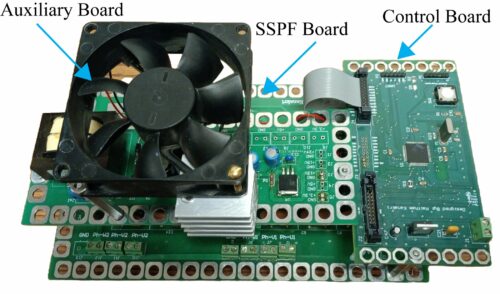A capacitorless solid-state filter developed by the research team of Purdue University for DC-AC converters offers greater efficiency and reliability.

An innovative capacitorless solid-state power filter (SSPF) has been developed by a research team led by Dr. Haitham Kanakri and Dr. Euzeli Dos Santos, research assistant, Purdue University, USA aimed at enhancing single-phase DC-AC converters. This innovative SSPF design eliminates the need for traditional LC filters and dc-link capacitors by using a high-frequency planar transformer that operates at 30kHz, allowing the H-bridge converter to generate a sinusoidal output voltage. The research offers a promising solution for power electronics engineers and manufacturers focused on creating more compact, efficient systems for a range of applications, from renewable energy to automotive sectors
Initial testing and theoretical analysis, conducted on a 60Hz, 120V system, yielded a total harmonic distortion of just 1.29%, meeting the stringent IEEE 519 standards. By removing the need for three major components—LC filters, dc-link capacitors, and complex voltage harmonic filtering—the SSPF significantly simplifies design and reduces material costs, making it a valuable advancement for power electronics manufacturers and system integrators focused on optimizing both space and performance.
The research also highlights the SSPF’s potential for various power converter applications, including in electric vehicles (EVs) and renewable energy systems. Aiming to extend the SSPF’s benefits across other converter topologies, the team is exploring novel strategies to further enhance power density and efficiency. By utilizing naturally occurring stray capacitance within converter circuits, the researchers anticipate substantial improvements in compactness and operational efficiency without the added bulk of external capacitors.
In particular, one area of focus is on using these principles to reduce the size of EV chargers, a development that could support the miniaturization and scalability of charging systems. The team’s exploration includes a promising new material, calcium copper titanate (CCTO), which can enhance stray capacitance within converters. The adoption of CCTO could enable capacitor-free designs in DC-DC converters, furthering advancements in sustainable and reliable power electronics.
The development of capacitorless SSPF technology represents a potential leap in power electronics, offering streamlined systems with fewer components and improved functionality. This pioneering work has the potential to pave the way for more efficient power systems across industries, reducing material reliance while supporting broader goals of sustainability and innovation.






